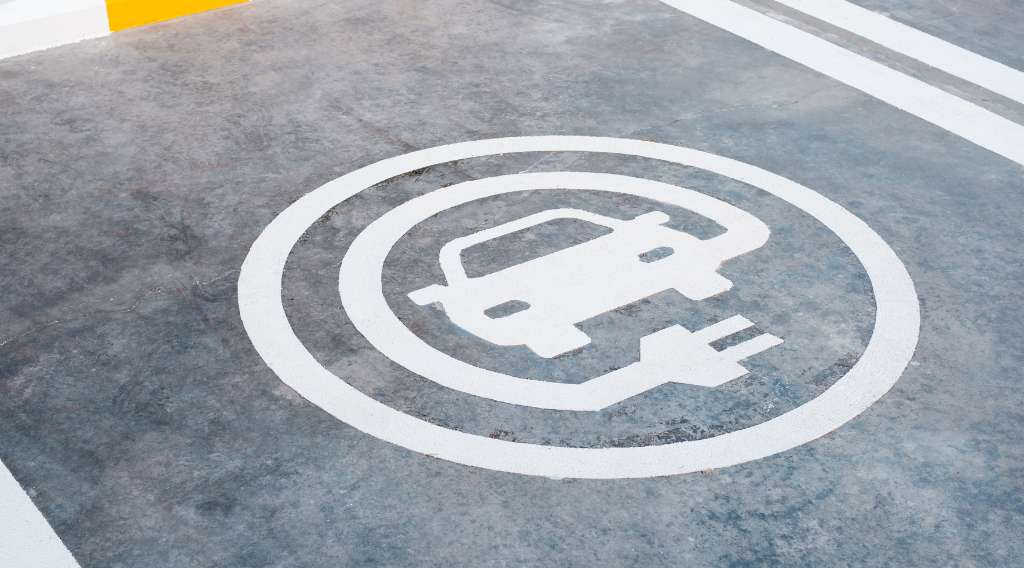Q&A: Accessibility and EV Charging Stations
May 9, 2023 | Rebecca Heisel | Education

With the passage of the Infrastructure Investment and Jobs Act and the Inflation Reduction Act, community members and local governments in Minnesota have increased interest and incentive to purchase electric vehicles (EVs) and install EV charging stations. However, when installing the charging infrastructure necessary to support EVs, including accessibility features for people with disabilities is often overlooked.
The Centers for Disease Control and Prevention reports that up to 1 in 4 adults living in the United States have some type of disability. The lack of proper accommodations at EV charging stations would act as a barrier for over a quarter of our population who own or are interested in owning an EV.
We had a conversation with David Fenley, ADA Director for the Minnesota Council on Disability, to learn more about the Americans with Disabilities Act (ADA) and to discuss the importance of incorporating standardized accessibility guidelines into EV charging station installations.
What is the Americans with Disabilities Act (ADA)?
The ADA was passed in 1990 and is considered civil rights legislation for people with disabilities. It prohibits discrimination in employment, state and local government, and places of public accommodation. It also has technical guidelines (measurements) for all sorts of spaces in the built environment; think of disability parking, curb ramps, door widths, and reach ranges. All these measurements exist so folks with disabilities can participate in society. They allow folks with disabilities to be on the field in the game of life and should not be viewed as a burden by designers.
What are some examples of everyday things that people experience that they may not realize are because of ADA?
Many accessible features originally meant for folks with disabilities that have become ubiquitous now benefit everyone in society. Curb ramps, those convenient little slopes that effortlessly dump you into the street from the sidewalk, were installed in few places after WWII disabled vets could not navigate streets. They were brought into the mainstream by disability activist Ed Roberts and friends at UC, Berkeley illegally tore up curbs and built their own curb ramps under the cover of darkness. This led to congress passing the Architectural barriers Act in 1968, which required federally funded facilities to remove barriers to folks with disabilities. Surely you can’t imagine pushing a stroller, riding a bike, or texting and walking across a street without these helpful slopes.
Grocery store doors did not always magically open for you when you pushed your shopping cart up to them. I know you have seen a package delivery person rely on the automatic door opener to deliver a cartload of packages to your office building. Imagine watching a video in your crowded cubicle-laden office or noisy bar without closed caption. “Hey, Siri” voice activation was developed for folks who can’t manipulate items physically. The list goes on: color contrast, plain English requirements, typewriters, office scanners, text messaging, the telephone all came about as a response to barriers that folks with disabilities face in the world.
Are EV charging stations required to follow ADA guidelines?
As it stands now, EV charging stations are subject to the Americas with Disabilities Act (ADA), just like everything else in places of public accommodation. A place of public accommodation is any place that is open to the public where commerce is carried out.
Why should EV charging stations have clear agreed upon accessibility guidelines?
Private industry and government will build them all based on different guidelines and the ones that are not accessible to folks with disabilities will face ADA lawsuits. As we move towards every car in the United States being electric and EV charging stations being built by the thousands every year, accessibility guidelines are a must.
Where can we go to learn more about accessibility standards for EV charging stations?
The U.S. Access Board has fantastic resources including technical specifications and diagrams showing multiple layouts for accessible EV charging stations. Locally, here in Minnesota, the Pollution Control Agency, the Department of Administration, and the Department on Labor and Industry have put out guidelines for using public grant dollars to build accessible EV charging stations.
Any last thoughts you’d like to share?
We should be looking to folks with disabilities and their personal experiences to inform all design. Without the ADA and its technical guidelines, folks with disabilities would be segregated and pushed to the periphery of society. They would be, and have been in the past, considered second-class citizens or not fully human. Folks would be and have been locked away, never to be seen or heard from. I think we can all agree that is not a society we want to live in. The contributions that folks with disabilities have made to society are countless, including revolutionizing the electric car industry.
